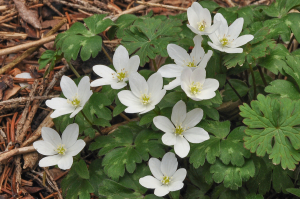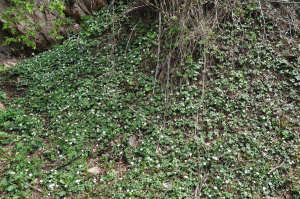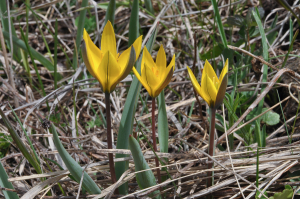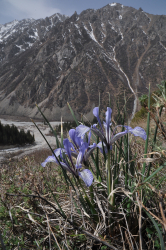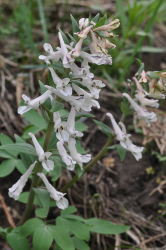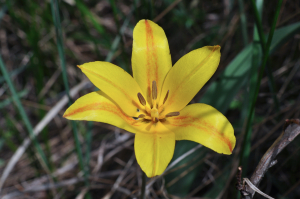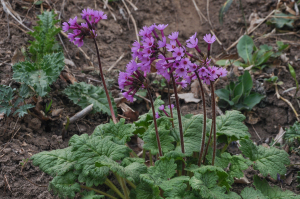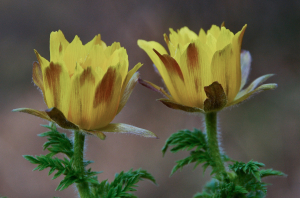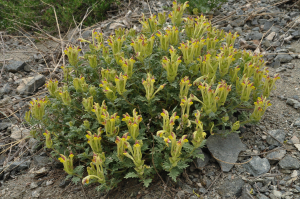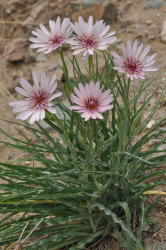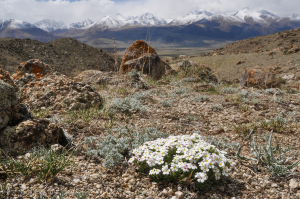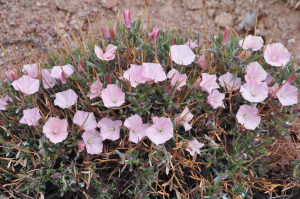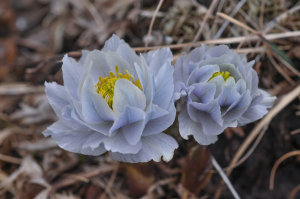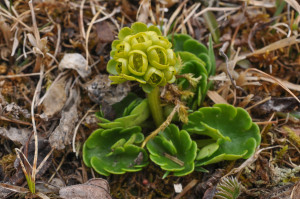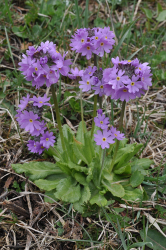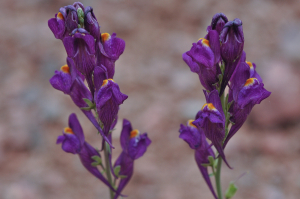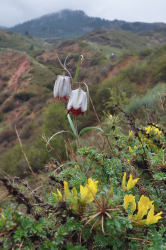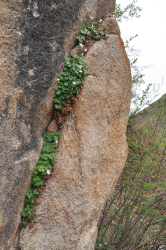Planning a good botanical tour is very important and can be a long and sometimes difficult task. Previous trips made by other plantsmen to Kyrgyzstan were made in June/July and therefore there was little information about plants flowering in April/May. With some difficulty I received information from various sources about what could be in flower. We could expect to see various Tulipa species (as a Dutchman I am very familiar with these, at least the cultivated ones), Eremurus, Adonis, Primula, Iris, Pulsatilla, Androsace, Fritillaria, etc.
A good way these days to plan your route is Google Earth. Sometimes roads and mountain passes can be seen very clearly and you can use that information to plan your final route for these special botanical trips. Next to that, it is important to have a good travel agency. I prefer to work with local agents who know the area well, but most of the time they do not know the local flora at all. After I made a rough plan of my route, I asked the agent to make photos in 2011 of the scenery, habitat, and flowers on my intended route. In June, 2011 I received various images with some nice plants and I decided to go ahead with the trip in 2012. As this was my first trip with this agent and to this country, I wanted to visit the well-known Ala Archa mountains near Bishkek first, followed by a round trip along Issyk-Kul lake, with some side valleys I saw on Google Earth.
The whole trip started in the capital city of Bishkek, with a short visit to the Bishkek square to see the changing of the guards, the house of parliament, and a very nice market.
On day two, we drove by minibus into the Ala Archa National Park, just one hour drive from Bishkek. We started to walk up a small path and passed our first exciting plants, like the ice blue Iris loczyi and very dwarf Tulipa dasystemon. Then disaster struck as one of the tour members slipped and broke her left leg. To make a long story short, after three hours a doctor and two helpers arrived on the mountain and gave her painkillers. It took us nearly two hours to get her down the mountain. I think my arms are six inches (15 cm) longer after this, as it is not easy to walk with someone on these small mountain paths. In a Bishkek hospital they took an x-ray and it was clear that she broke her leg in three places. Three days later, after getting a transport plaster cast, she was flown back to her own country to be operated on. She has fully recovered from her injury now, but it was not a good start to this trip!
Our next goal was the Chong Kemin valley, but first we paid a visit to the famous Burana Tower (10th century) at Tokmok.
During our whole trip we stayed at various accommodations, sometimes at hotels, but also at homestays in the country side, which was a nice experience, allowing us to learn in more detail how the people live in Kyrgyzstan.
In the Chong Kemin valley, we found new plant treasures like Tulipa kolpakowskiana, Primula kaufmanniana, Corydalis glaucescens, Tragopogon ruber and Linaria transiliensis. But two other plants were just fantastic to see there in full flower: a very compact yellow-flowered Scutellaria przewalskii and good forms of Adonis turkestanica.
The following days were spent alongside valleys close to the north of Issyk-Kul lake, which is at 5,200 feet (1600 m). One of these valleys, the Grigorievka gorge, was put in the program as I had found it on Google Earth where a small road was going into the mountain. It is always a gamble to go somewhere without knowing what you will find, but that is part of the fun. Sometimes it can be a waste of time but in this case we hit the jackpot.
We drove in our minibus over a dirt track road higher and higher until a big snow patch blocked our way further up. I decided to walk back the same way we came in as it looked like promising habitat for plants. The road ran parallel to a mountain stream with large rock formations on both sides. In the larger crevices, in moist and shady positions, grew a plant I had not seen before. It looked like a primula but with no attractive flowers at all. The leaves looked very much like Primula matthioli (syn. Cortusa matthioli) so I was convinced that it was a primula. Back in the hotel, I send an image to Pam Eveleigh (a primula expert) and asked if she was able to identify this strange primula. She replied a few days later and wrote that I had found a “very rare” plant and it was not a primula but Kaufmannia semenovii and that I should contact a Russian botanist who was writing about it. Of course, when I got back home, I did send all the images I had with location information to the Russian botanist as it is important for science to keep records of such special finds.
We all continued our walk further down the road looking at plants and, to be honest, we did not find many, only a few plants of Primula algida. Eventually, I saw hundreds, or even thousands, of white anemones growing in the moist turf and in rock crevices. The ones in the crevices looked amazing and I took some pictures. I have to tell you that most anemones do not excite me very much and therefore I did not look at them in much detail. There was not much more to be seen in this valley and it was very cloudy so we drove back to our hotel.
The rest of the trip went fine. We finished our round trip along Issyk Kul Lake and at the higher passes we found some lovely plants of Trollius lilacinus (Hegemone lilacina), Chrysosplenium tianschanicum, Pulsatilla campanella, Fritillaria walujewii, Tulipa heterophylla, Tulipa tetraphylla, Convolvulus tragacanthoides and Androsace pavlovskyi.
The trip came to an end and was very successful despite the very bad broken leg at the start.
When I come home from such trips, I sort all my images and name all the plants I have photographed. Some plants are easy to identify, others are more difficult, and sometimes I ask experts on a special genus if they can help me with identifying unusual plants in my images. After tours like this, I also send some plant friends a few plant images I made on the tour just for fun and this trip was no exception. Just a few hours after sending my email with some images, a close friend responded and said he was so excited to see the first image of Hepatica falconeri and I should get in touch with John Massey from Ashwood nursery as he was an expert on Hepatica. Hepatica falconeri? I had never heard of it! After this email I looked again closer at all my anemone images and, indeed, they looked different. More serious search on the internet gave me just a little information about this hepatica.
The next day I contacted John Massey and sent him my “anemone” images.
His reply: “Wow, Wow Wow, I may never sleep again.”
More research about Hepatica falconeri revealed some interesting information. Hepatica falconeri is called the link between Anemone and Hepatica. The leaf shape of Hepatica falconeri is intermediate between Anemone flaccida and Hepatica nobilis. With Hepatica the flowers appear first and new leaves develop after the flowers and with Anemone it is the opposite way, first leaves and then the flowers.
Hepatica falconeri was, till my discovery in Kyrgyzstan, only known from a few locations in the mountains north of Islamabad in Pakistan. As this was a Hepatica species barely in cultivation we decided to go back to the gorge where I had found it and some nearby valleys as well.
Our trip in 2013 took place from April 26th to May 4th and besides botanizing at some other locations our main goal was the Grigorievka gorge again. Although we had some serious rain, we found Hepatica falconeri again in full flower and were able to study it in more detail this time. Herbarium material and a few living plants were collected.
Hepatica falconeri is a deciduous perennial, flowering with the new leaves, and grows between 6,000 and 8,200 feet (1,830 – 2,500 m) on rocky slopes, rock crevices, shady clearings, and in mixed woodland, often under Betula tianschanica, Picea schrenkiana and various shrubs.
The flowers are white, occasionally flushed pink on the outside. The leafy bracts appear approximately 0.6 inches (1.5cm) below the flower, a feature unique to Hepatica falconeri. The deciduous foliage is deeply divided into three lobes; these lobes are further shallowly dissected resulting in many rounded teeth. The green leaves, which can also be marbled, are covered in short hairs; occasionally the undersides have a red flush.
Some botanists think that Hepatica transsilvanica is the result of a cross between Hepatica nobilis and Hepatica falconeri, but so far it has not been proven.
We all had a splendid week in Kyrgyzstan and found thousands of Hepatica falconeri with some variation in flower shape, and a huge variation in leaf patterns. The few living collections we made are now well established in cultivation. There are now even hybrids between Hepatica falconeri and another species of Hepatica.
During tours like these you never know what you will find. This time we found two very rare species in one valley, namely Kaufmannia semenovii and Hepatica falconeri. What more could we wish for? Well, in a valley close to this one we found the very hairy and rare Adonis bobroviana, previously only known from China, but that is another story.
Finding Hepatica Falconeri
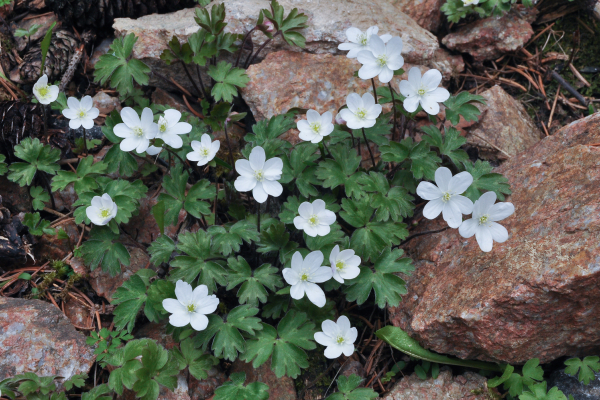
July 2, 2021
THIS IS THE STORY of the rediscovery of an unusual species which is said to be the link between the genera Anemone and Hepatica. In 2010, I was asked to organize and lead a tour in Kyrgyzstan in spring 2011. Eventually this trip took place in spring 2012 from April 22nd to May 6th. At that point I had never heard of Hepatica falconeri.

